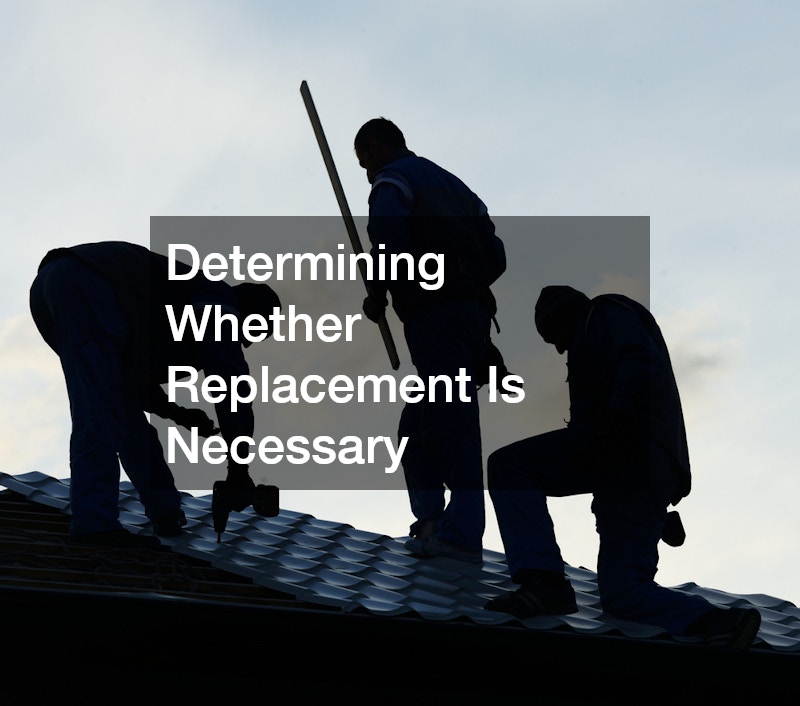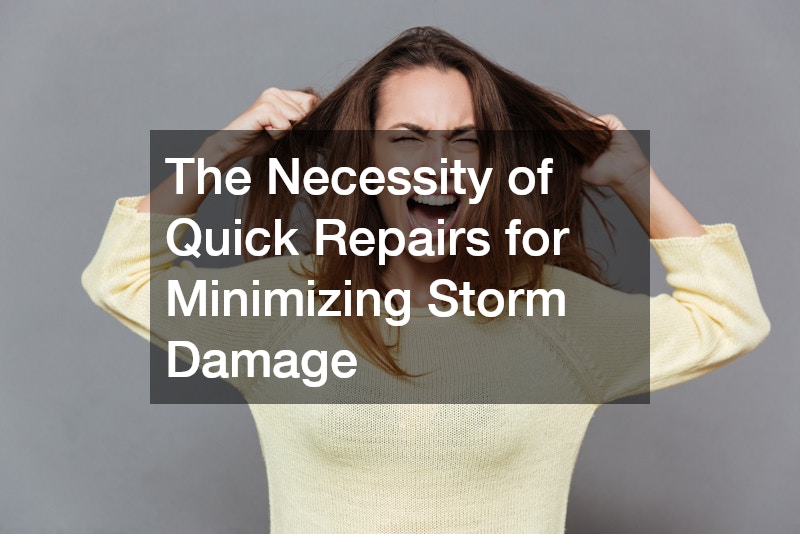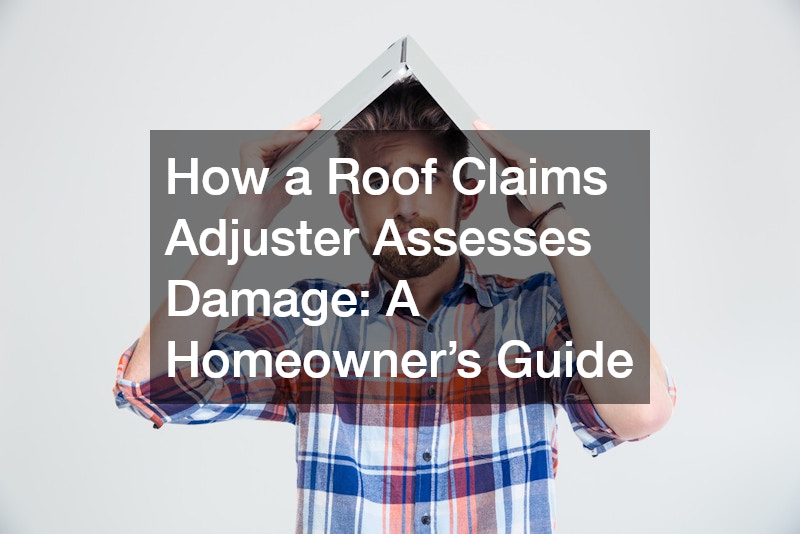Disclaimer: The insurance information provided here is for general knowledge only and does not replace advice from licensed insurance professionals. Please consult a qualified advisor for coverage decisions.
When a severe storm or unexpected damage occurs to your home’s roof, understanding the process of assessing the damage is crucial. Homeowners often find themselves overwhelmed by the tasks associated with repairs, replacements, and navigating the complexities of insurance claims. This comprehensive guide aims to demystify the process by explaining how a roof claims adjuster evaluates roofing damage, ensuring you are better prepared when such unfortunate events happen.
A roof claims adjuster plays a pivotal role in identifying and documenting the extent of damage, determining the necessary repairs or replacements, and facilitating the claims process with your insurance company. They are experts in assessing various types of roofing issues, from visible damage caused by severe weather to hidden problems that may cause long-term harm if not addressed promptly. This guide will walk you through their methodologies, considerations, and the importance of timely intervention by professionals to safeguard your home.
By the end of this article, you will have a thorough understanding of what to expect when working with a roof claims adjuster. Additionally, you will be equipped with the knowledge to make informed decisions about your roofing needs, collaborate effectively with roofing professionals, and ensure that your home remains secure and protected against future damage. So, without further ado, let’s dive into the intricacies of how a roof claims adjuster assesses damage to your home’s roof.
Understanding the Role of a Claims Specialist in Your Roofing Assessment

The role of a claims specialist, particularly a roof claims adjuster, is multifaceted and essential in the aftermath of roofing damage. These specialists are responsible for conducting a thorough inspection of the affected areas, documenting the extent of the damage, and determining the appropriate course of action. They work closely with public claims adjusters and insurance companies to ensure that the claims process is handled accurately and efficiently.
During the assessment, the roof claims adjuster will inspect various elements of your roofing system, including shingles, flashing, gutters, and structural components. Their expertise allows them to identify not only obvious issues, such as missing or damaged shingles but also underlying problems that may not be immediately visible. This comprehensive evaluation is crucial for ensuring that all damage is accounted for and addressed properly.
Moreover, a roof claims adjuster acts as a liaison between homeowners, roofing professionals, and insurance providers. They ensure that all parties have a clear understanding of the damage and the necessary steps for repair or replacement. By facilitating communication and providing detailed reports, the roof claims adjuster plays a vital role in the smooth and successful resolution of roofing damage claims.
Determining Whether Replacement Is Necessary

One of the primary tasks of a roof claims adjuster is to determine whether the damaged roof requires full replacement or if repairs will suffice. This decision hinges on various factors, including the extent of the damage, the age of the roof, and the condition of the roofing materials. The adjuster will carefully examine the overall state of the roof to make an informed recommendation.
If the damage is extensive, affecting a significant portion of the roof or compromising the structural integrity of the home, the adjuster may suggest roof replacement services. This ensures that the home is adequately protected against future weather events and potential leaks. In cases where the damage is isolated and can be effectively addressed with targeted repairs, the roof claims adjuster will outline the specific areas that need attention.
It’s important for homeowners to understand that the adjuster’s determination is based on both immediate and long-term considerations. An older roof may be more susceptible to continuous damage, making replacement a more cost-effective solution in the long run. The expertise of the roof claims adjuster ensures that the chosen course of action aligns with the best interests of the homeowner and the overall health of the roofing system.
The Necessity of Quick Repairs for Minimizing Storm Damage

Timely intervention is critical when dealing with storm damage to your roof. A roof claims adjuster emphasizes the importance of quick repairs to prevent further deterioration and minimize the impact of the initial damage. Delaying repairs can lead to compounded issues, including water infiltration, mold growth, and structural weakening.
Storm damage restoration often involves addressing not only the visible damage but also any underlying vulnerabilities that the storm may have exposed. A prompt assessment by a roof claims adjuster ensures that all aspects of the damage are identified and addressed. This proactive approach helps safeguard the home against future weather events and reduces the likelihood of recurring issues.
Moreover, quick repairs are essential for maintaining the overall integrity of the roofing system. The roof claims adjuster will work with roofing professionals to implement the necessary fixes swiftly and effectively. By prioritizing timely intervention, homeowners can mitigate the risks associated with prolonged exposure to the elements and preserve the longevity of their roofing investment.
Evaluating Hazards That May Have Affected Your Structure
Natural disasters, such as storms and high winds, often bring additional hazards that can impact the structure of your home. A roof claims adjuster will thoroughly evaluate these hazards, including storm damage tree removal and debris clearance. The presence of fallen trees and heavy branches can cause significant structural damage, necessitating a comprehensive assessment.
During the evaluation, the roof claims adjuster will inspect areas where trees or debris have impacted the roof. This includes checking for punctures, tears, or compromised sections of the roofing material. They will also assess the potential for further damage if these hazards are not promptly removed and addressed.
Collaborating with a disaster restoration company can be beneficial in these situations. Such companies specialize in storm damage restoration and can assist in removing hazards and repairing the affected areas. The roof claims adjuster’s coordination with these professionals ensures a holistic approach to restoring the home’s safety and functionality.
Identifying Hidden Damages
Not all roofing damage is immediately visible to the naked eye. A roof claims adjuster is trained to identify hidden damages that may pose long-term risks to the integrity of the roof and the home. These hidden damages can include water infiltration, weakened roofing structures, and unseen punctures or tears.
Using specialized tools and techniques, the roof claims adjuster will meticulously inspect the roof for signs of hidden damage. This may involve thermal imaging to detect moisture beneath the surface or probing the structural components for signs of weakness. By uncovering hidden issues, the adjuster ensures that all necessary repairs are identified and included in the claim.
In cases where significant hidden damage is discovered, working with a disaster restoration company can expedite the repair process. These companies have the expertise and resources to address both visible and concealed damages, restoring the roof to its optimal condition. The roof claims adjuster’s findings play a crucial role in guiding the restoration efforts and ensuring comprehensive damage mitigation.
The Effects of Leaks and Other Lingering Damages
Roof leaks are a common consequence of storm damage or aging roofing materials. A roof claims adjuster focuses on identifying and documenting leaks, as well as assessing their impact on the overall structure of the home. Leaks can lead to significant water damage, necessitating prompt intervention to prevent further deterioration.
The adjuster’s evaluation includes tracing the source of the leaks, examining affected areas for signs of water intrusion, and determining the extent of the damage. This assessment is crucial for developing an effective repair plan and ensuring that all compromised sections of the roof are addressed. Ignoring leaks can result in mold growth, rot, and structural weakening, making timely repairs essential.
Collaboration with water restoration companies is often necessary to address the repercussions of leaks and lingering damage. These companies specialize in mitigating water damage, drying affected areas, and preventing mold growth. The roof claims adjuster coordinates with these professionals to ensure a comprehensive and effective restoration process, protecting the home from further harm.
Determining the Extent of Necessary Repairs
After a thorough assessment, the roof claims adjuster will determine the extent of the necessary repairs. This involves evaluating the damaged areas, estimating the cost of repairs, and outlining the required materials and labor. The goal is to ensure that all damage is addressed comprehensively, restoring the roof to its pre-damage condition.
The adjuster will document their findings in a detailed report, which serves as the basis for the insurance claim. This report includes photographs, measurements, and descriptions of the damage, providing a clear picture of the required roofing repairs. It also outlines the scope of work needed and the estimated costs, ensuring transparency and accuracy in the claims process.
Homeowners can use this report to communicate with roofing professionals and obtain accurate quotes for the necessary repairs. The roof claims adjuster’s expertise ensures that all aspects of the damage are accounted for, minimizing the risk of overlooked issues. By providing a comprehensive assessment, the adjuster facilitates the smooth and efficient resolution of the roofing damage claim.
Evaluating Different Residential Roof Types
Residential roofing comes in various types, each with its own set of characteristics and vulnerabilities. A roof claims adjuster is well-versed in evaluating different roof types, including asphalt shingles, metal roofs, and tile roofs. This knowledge allows them to accurately assess the damage and determine the most effective repair or replacement solutions.
For instance, asphalt shingles are common in many residential areas and are known for their affordability and ease of installation. However, they may be more susceptible to damage from high winds and hail. A metal roof contractor may be consulted for metal roofs, which are durable and long-lasting but can suffer from issues such as corrosion or loose panels.
The roof claims adjuster will consider the specific characteristics of the roof type when conducting their assessment. This includes evaluating the condition of the roofing materials, checking for signs of wear and tear, and determining the appropriate course of action. By tailoring their evaluation to the unique needs of each roof type, the adjuster ensures a thorough and accurate assessment.
Collaborating With Roofing Professionals for Damage Evaluation
Effective collaboration between a roof claims adjuster and roofing professionals is essential for accurate damage evaluation and successful restoration. Roofers bring specialized knowledge and practical experience to the table, aiding the adjuster in identifying and addressing all aspects of the damage. Together, they ensure that the roofing repairs are carried out to the highest standards.
During the assessment, the roof claims adjuster may consult with roofers to gain insights into the extent of the damage and the required repairs. The expertise of the roofers helps in confirming the adjuster’s findings and validating the recommended solutions. This collaborative approach ensures that the assessment is thorough and the repairs are effective.
Additionally, roofers play a crucial role in executing the repairs and ensuring that the roofing system is restored to its optimal condition. The roof claims adjuster will coordinate with the roofing professionals to develop a repair plan that aligns with the assessment findings. This partnership guarantees that all necessary repairs are completed effectively and efficiently, safeguarding the homeowner’s investment.
Understanding the role of a roof claims adjuster and the process they follow in assessing roofing damage is invaluable for homeowners. From identifying visible and hidden damages to determining the necessity of repairs or replacements, the adjuster’s expertise ensures that all aspects of the roofing system are evaluated comprehensively. By working closely with public claims adjusters, roofing professionals, and restoration companies, they facilitate a smooth and efficient claims process.
Swift intervention and timely repairs are paramount in minimizing the impact of roofing damage. The roof claims adjuster’s prompt assessment helps prevent further deterioration and safeguards the home against future weather events. By collaborating with experienced roofers and restoration companies, they ensure that all damages are addressed effectively, restoring the roof to its optimal condition.
As a homeowner, being informed about the assessment process empowers you to make well-informed decisions about your roofing needs. Whether it involves storm damage restoration, roof replacement services, or addressing leaks and hidden damages, the guidance of a knowledgeable roof claims adjuster is crucial. Understanding their role and the meticulous process they follow ensures that your home remains protected and resilient against potential roofing issues.


